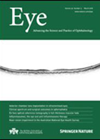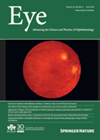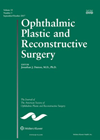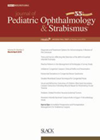
Journal Reviews archive for October 2018
Aberrant regeneration rates following traumatic oculomotor palsy
Traumatic oculomotor nerve palsies can result in aberrant regeneration / synkinesis which impairs normal facial function. In this paper, the authors retrospectively reviewed the records of 16 patients with traumatic oculomotor nerve palsies who were treated with or without steroids....
Using a pupillometer to confirm presence of RAPD in post stroke homonymous hemianopia
It has been reported that relative afferent pupillary defects (RAPDs) may be present in patients with occipital lobe lesions. However, a small contralateral RAPD due to a difference in the crossed and uncrossed fibres can be difficult to detect using...
Use of the RAPDx device to evaluate efficacy of treatment in patients with optic nerve disease
The RAPDx objectively determines the RAPD magnitude by alternately presenting light stimuli to each eye and deriving amplitude and latency scores. The authors of this paper evaluated the amplitude and latency scores from the RAPDx together with other ophthalmic investigations...
Clinical and neuro-ophthalmologic predictors of visual outcome in idiopathic intracranial hypertension
This prospective study of 40 patients aims to assess visual morbidity in patients with idiopathic intracranial hypertension (IIH). Final visual outcome of patients was compared with clinical and neuro-ophthalmic parameters such as visual acuity, visual field, contrast sensitivity, retinal nerve...
Congenital dacryocystocele in UK
The authors report the first national study of dacryocystocoeles in UK. They report an incidence of one in 18,597 live births in the UK for congenital dacryocystocele. A prospective observational study of 49 cases of congenital dacryocystocele presenting between September...
Lateral tarsal strip versus Bick’s procedure in correction of eyelid malposition
The authors report a retrospective case series of patients, to evaluate the effectiveness of Lateral Tarsal Strip (LTS) and Bick’s procedure (lateral wedge resection) for all types of involutional lower eyelid malposition, at two centres between January 2012 and 2015....
Fixed or variable Muller’s muscle resection
This is a retrospective analysis of 60 patients who underwent posterior approach ptosis surgery utilising a Muller’s muscle resection. The study compares those who underwent a fixed resection length of 7mm of Muller’s muscle with those having a variable resection...
Acute dacryocystic retention
This is a retrospective study of patients with acute dacryocystic retention (ADR). The condition is distinct from infectious dacryocystitis, and is characterised by an acute onset of pain and epiphora associated with a tender but not inflamed lacrimal sac thought...
MISS vs. conventional surgery
This was a prospective randomised parallel arm design study for 40 patients. Group 1 consisted of conventional strabismus surgery using the limbal approach and group 2 consisted of minimally invasive strabismus surgery (MISS). Mean age was 21.1±2.73 years for MISS...
Strabismus measurement comparisons
The authors conducted a prospective study to compare the measurements obtained by objective alternate prism and cover test (PCT) and the subjective red glass test in 72 patients aged 60 years on average and with a mean visual acuity of...
Simultaneous vs. alternate PCT disparity in XT
The authors quantified the relationship between simultaneous prism and cover test (SPCT) and alternate prism and cover test (APCT) alignment in patients with measures at the same visit after surgery for exotropia. This was a retrospective study of 955 patients...
Video game play as amblyopia treatment adjunct
The aim of this study was to evaluate the role of monocular video game play as a supplement to occlusion therapy in the treatment of anisometropic amblyopia (AA). This was a prospective study of 68 patients aged six to 14...









